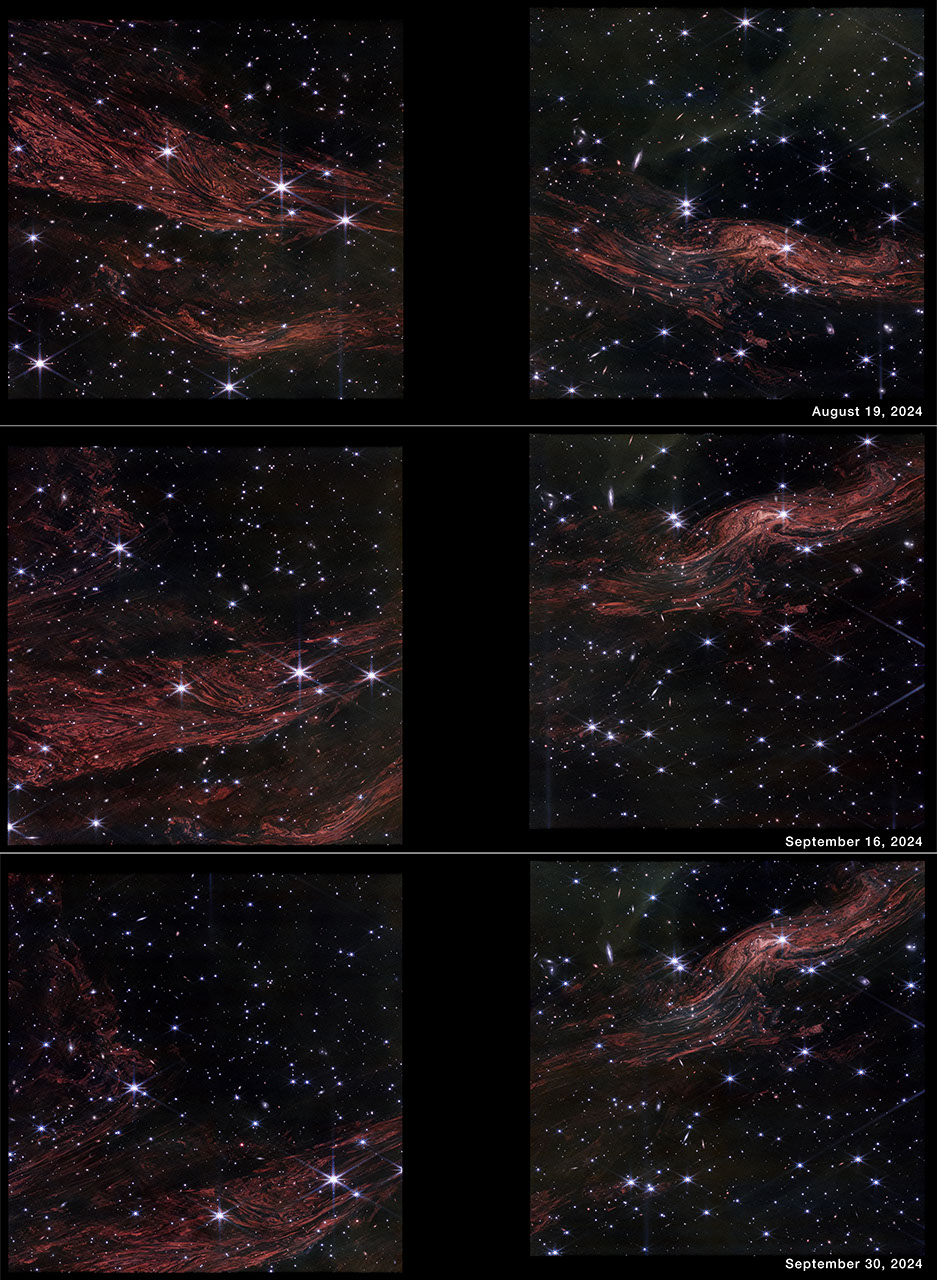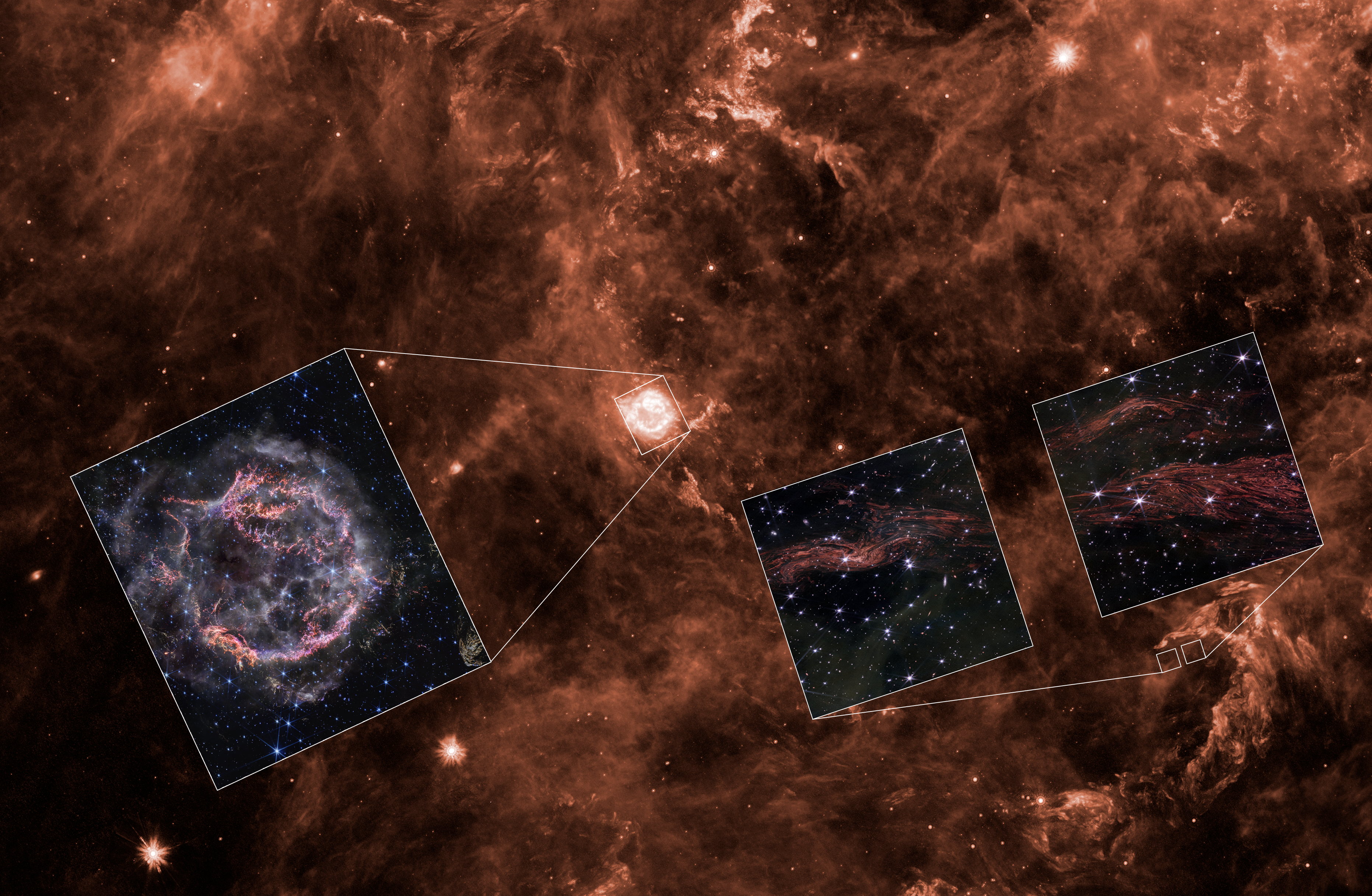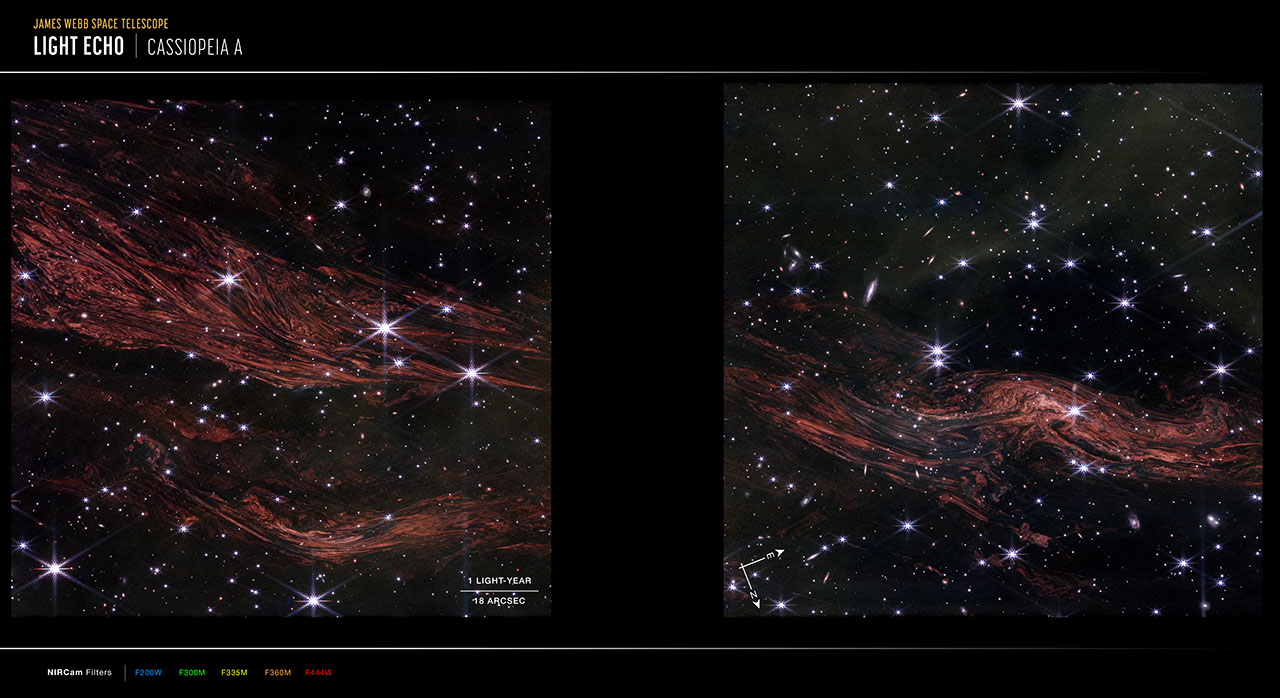1 min read
Cassiopeia A Light Echoes Time-lapse
This time-lapse video using data from NASA’s James Webb Space Telescope highlights the evolution of one light echo in the vicinity of the supernova remnant Cassiopeia A. A light echo is created when a star explodes or erupts, flashing light into surrounding clumps of interstellar dust and causing them to shine in an ever-expanding pattern. Webb’s exquisite resolution not only shows incredible detail within these light echoes, but also shows their expansion over the course of just a few weeks – a remarkably short timescale considering that most cosmic targets remain unchanged over a human lifetime.
- Release DateJanuary 14, 2025
- Science ReleaseNASA’s Webb Reveals Intricate Layers of Interstellar Dust, Gas
- CreditVideo: NASA, ESA, CSA, STScI, Jacob Jencson (Caltech/IPAC), Joseph DePasquale (STScI)
Related Images & Videos

Cassiopeia A Light Echoes (NIRCam Images)
These shimmering cosmic curtains show interstellar gas and dust that has been heated by the flashbulb explosion of a long-ago supernova. The gas then glows infrared light in what is known as a thermal light echo. As the supernova illumination travels through space at the speed...

Cassiopeia A Light Echoes (Spitzer Context)
This background image of the region around supernova remnant Cassiopeia A was released by NASA’s Spitzer Space Telescope in 2008 . By taking multiple images of this region over three years with Spitzer, researchers were able to examine a number of light echoes. Now, NASA’s James...

Cassiopeia A Light Echoes (Compass Image)
Image of light echoes near Cassiopeia A captured by Webb’s NIRCam instrument, with compass arrows, scale bar, and color key for reference. The north and east compass arrows show the orientation of the image on the sky. Note that the relationship between north and east on the sky...
Share
Details
Laura Betz
NASA’s Goddard Space Flight Center
Greenbelt, Maryland
laura.e.betz@nasa.gov
NASA, ESA, CSA, STScI, Jacob Jencson (Caltech/IPAC), Joseph DePasquale (STScI)































